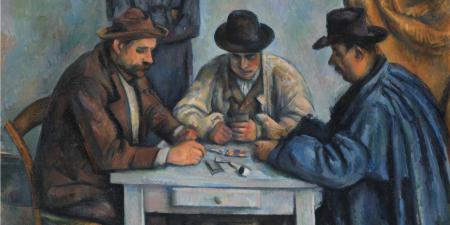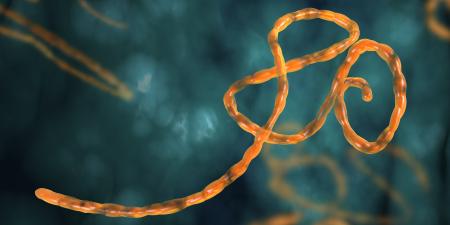Almost unknown as a poet in her lifetime, Emily Dickinson (1830-1886) is now recognized as one of our greatest. According to biographer George Whicher, Dickinson was the "only American poet of her century who treated the great lyric theme of love with entire candor and sincerity." Although she wrote eloquently and passionately about affairs of the heart, Dickinson never married, and after age 30 she almost never saw anyone outside of her immediate family. Some believe this seclusion was her response to the patriarchal literary establishment of her time, which limited female writers to domestic and domesticated topics. Others believe that her withdrawal gave her both the space and time to write by freeing her from woman's duties. Few of her writings were published during her lifetime, and it was only after her death that 1700 poems were discovered.
For modern scholars and readers, Dickinson's poems are engaging and lyrical, but they can also be downright incomprehensible. Helping verbs and connecting words are routinely dropped, and pronouns sometimes refer to words that do not appear in the poem. Within these poetic puzzles, Dickinson's metrical mastery of English hymns results in words and sentences that are more like melodies when spoken.
Love is anterior to life,
Posterior to death,
Initial of creation, and
The exponent of breath.
The complexities of Dickinson's poems reflect the nature of the emotions and feelings that were the subjects of her life's work. Romantic love, unconditional compassion, pure empathy, and their respective antithesis often defy rationalization, let alone full understanding of its crescendo ebbs and trickling flows. According to many scholars, Dickinson was a master in capturing the pure essence of emotions--to her, love exists before ("is anterior to") life and exists after ("is posterior to") death. But, we might want to ask Dickinson, can love really exist unaltered by the experiences of life?
Many if not nearly all of us become more cynical and jaded as we get older, and our capacity to love and show compassion diminishes over time and experience. In medicine, our ability to show compassion and empathy towards those in need also changes and matures throughout our professional careers. In some respects, this maturation provides us with necessary protection against heartache, but unfortunately, this maturation often goes too far. What can be done to prevent and treat this ailment of the heart?
As we know, heart disease is the leading cause of death in the United States with more than a million heart attacks reported each year. Risk factors for the hardening of arteries that contribute to heart attacks include hypertension, diabetes, obesity, hyperlipidemia, and a family history of heart disease. Thus, could hardening of the arteries contribute to hardening of our compassion and empathy over time? Of course not; the cure for this heart ailment is not aspirin or an ACE inhibitor. But just as there are risk factors and remedies for heart attacks, so there are for this ailment. For physicians, one of these risk factors is the increasing level of professional dissatisfaction and stress that they experience. Common sense tells us that it is more difficult to show love and compassion if one is constantly stressed, burned out, and angry. In some cases, painting a face on a volleyball and giving it a name may be a coping strategy. However in medicine, the remedies for professional stress and burnout are not that simple.
In our mission to promote the ethical and professional development of the next generation of physicians, we have so far focused primarily on providing our readers with content and resources to achieve the former--ethical development. Throughout the rest of this year, we will introduce professional development initiatives, providing practical coping and communication skills to help students and physicians better address the stress of medical training and practice. Furthermore, we will be inviting those who are interested in advising and counseling students, residents, and new physicians to volunteer as mentors.
We expect that, as new content designed to promote the professional development of physicians is introduced, there will be cynics and skeptics out there who question and challenge the utility of our efforts. But only through frank and construct feedback from our readers, can we hope to better develop remedies to address "hardening of the arteries." If Emily Dickinson had it right,
Hope is the thing with feathers
That perches in the soul,
And sings the tune without the words,
And never stops at all,
And sweetest in the gale is heard;
And sore must be the storm
That could abash the little bird
That kept so many warm.
I've heard it in the chillest land
And on the strangest sea;
Yet, never, in extremity,
It asked a crumb of me.
We hope that, in the coming months and issues of Virtual Mentor, our efforts will challenge the assumptions of our skeptics, that their responses will challenge our biases, and that interested physicians will agree to serve as volunteer online mentors. In a spirit of hope ("the thing with feathers") we trust that our call to action will play some part in promoting the professional development of the next generation of physicians.



